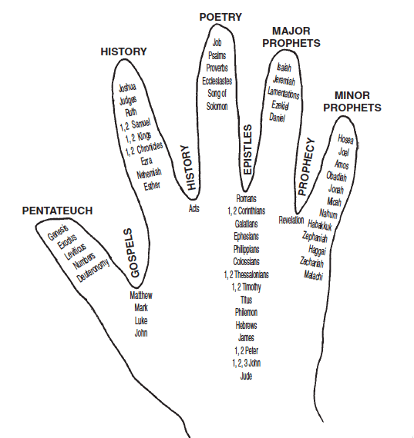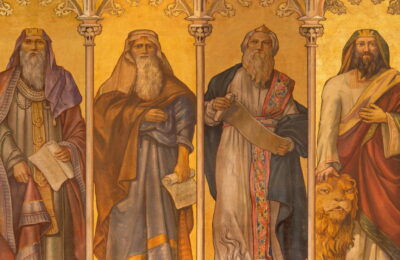Part 3 of the Series: How the Bible Is Organized
“These are written so that you may believe that Jesus is the Christ, the Son of God; and that by believing you may have life in His name.” — John 20:31 (LSB)
Introduction: The Arrival of the King
The Old Testament ends in anticipation. The New Testament begins with arrival. The long-promised Messiah has come, and the kingdom of God has broken into history. The New Testament is the Spirit-inspired witness to Jesus Christ, written by those who saw His glory, heard His words, and carried His message.
This final article in our series explores how the New Testament is structured, how its books were recognized as Scripture, and how this covenant document equips the church for life and mission.
Structure of the New Testament
The New Testament includes 27 books, arranged in four sections:
Memorization Device: 4-1-21-1
• 4 Gospels: Matthew, Mark, Luke, John
• 1 Historical Book: Acts
• 21 Epistles (Letters): From Romans to Jude
• 1 Prophetic Book: Revelation
This structure reflects both narrative flow (Jesus’ ministry → Church birth) and theological teaching (apostolic doctrine → future hope).

The Gospels: Four Portraits, One Christ
The Gospels are not mere biographies—they are theological testimonies to the life, death, and resurrection of Jesus.
• Matthew: The promised King (Jewish audience)
• Mark: The suffering servant (action-packed, Roman audience)
• Luke: The perfect man (historical detail, Gentile focus)
• John: The divine Son (cosmic theology)
Together, they give us a composite view of the incarnate Word.
“Many have undertaken to compile an account… it seemed fitting for me also…” — Luke 1:1–3
Acts: The Spirit and the Church
Luke’s second volume, Acts, tells the story of the risen Christ working through His Spirit-empowered church.
• Describes the spread of the gospel from Jerusalem to Rome
• Highlights key leaders: Peter, Stephen, Paul
• Connects the Gospels with the Epistles
Acts is both history and theology—narrative shaped by divine intent.
The Epistles: Apostolic Doctrine for the Church
The 21 letters in the NT were written by apostles and their close associates, providing instruction, correction, and encouragement.
• Pauline Epistles (13): Romans through Philemon (with Hebrews traditionally grouped here)
• General Epistles (8): Hebrews, James, 1–2 Peter, 1–3 John, Jude
“These things write we unto you, that your joy may be full…” — 1 John 1:4
Epistles are both doctrinal and pastoral, teaching the church how to live in light of the gospel.
Revelation: The Final Word
Revelation, written by the apostle John, is apocalyptic prophecy.
• Pulls together OT imagery (Daniel, Ezekiel, Isaiah)
• Reveals Christ’s victory, final judgment, and new creation
• Encourages perseverance under persecution
“The testimony of Jesus is the spirit of prophecy.” — Rev. 19:10
Canon Formation: Recognizing the Word
Early Christians recognized NT writings as Scripture based on:
• Apostolic origin or close connection
• Orthodox doctrine and Christ-centered focus
• Widespread use and spiritual fruitfulness
By the end of the 2nd century, most NT books were in use across the churches. The canon was affirmed, not invented.
Key moments:
• Athanasius’ Easter Letter (AD 367): Lists all 27 NT books
• Councils of Hippo (393) and Carthage (397): Affirm canon
• Reformers and modern churches: Recognize, not create
Manuscripts and Transmission
New Testament manuscripts were copied in Greek on papyrus and parchment:
• Alexandrian Family: Oldest, most accurate texts
• Byzantine Family: Most numerous, later
• Critical Editions: Nestle-Aland, UBS, SBLGNT
Despite textual variants, the NT has 5,800+ Greek manuscripts—far more than any other ancient document.
The text is stable, reliable, and preserved by providence.
The Role of the Dead Sea Scrolls (Indirect)
While no NT documents were found at Qumran, the DSS provide important context:
• Shared apocalyptic expectations (e.g., war scrolls)
• Messianic hopes: Prophet, Priest, King (11QMelchizedek)
• Confirm the Jewish worldview from which the NT emerged
The NT writers, especially John and Paul, build on these motifs to show how Jesus fulfills them all.
Application: A Covenant Document for the Church
The NT is our covenant document:
• Anchored in eyewitness testimony
• Empowered by the Spirit
• Centered on Christ
• Written for the life and mission of the church
It calls us not just to read, but to believe, obey, and proclaim.
“Contend for the faith once for all delivered to the saints.” — Jude 3
Conclusion: One Book, One Savior, One Mission
The Bible ends as it began—with God dwelling with His people.
The New Testament is not just a history of the early church. It is the living, authoritative word for every generation.
Until He comes again, we are to be people of the Word—anchored in Scripture, proclaiming Christ, empowered by the Spirit.




